This website uses cookies
This website uses cookies to enable it to function properly and to analyse how the website is used. Please click 'Close' to accept and continue using the website.


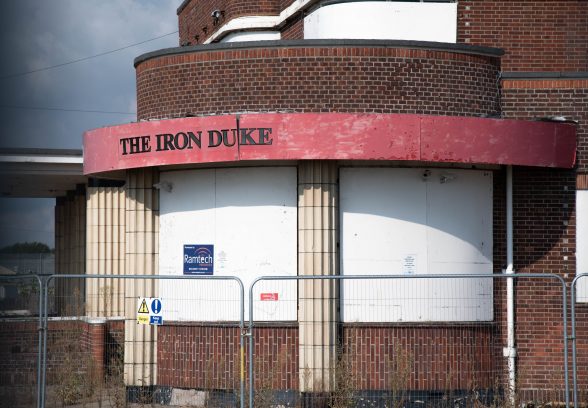
© Friends of the Iron Duke.
August 2020 - The Iron Duke public house, Great Yarmouth
Arthur W. Ecclestone (1948)
The grade II listed Iron Duke, situated on Jellicoe Road in Great Yarmouth, facing the North Denes Dunes and out to the sea, was built as the flagship public house for the Lacons brewery. At its height, Lacons had over three hundred pubs in its portfolio, including fifty in London, producing twenty-five million pints a year (before eventually selling out to Whitbread in 1965). The brewery had its own bricklayers, carpenters, and electricians to build and maintain its pubs, and had workshops in Great Yarmouth, at nearby Diss, Cambridge and London.
The Iron Duke pub is named after the battleship HMS Iron Duke (1912), captained by Admiral John Jellicoe at the Battle of Jutland (1916). The pub’s designer, Arthur William (Billy) Ecclestone (1901-1984) was not only Lacons’ Chief Architect, but also one of its directors. He was sometime Mayor of the town, and a local historian authoring books on its rich history, such as The Rise of Great Yarmouth: The Story of a Sandbank (1959). He was a visionary architect who worked in a wide range of styles. The Avenue Pub (1929) on Beatty Road in Great Yarmouth is a fine example of the neo-Tudor, the style one more commonly associates with inter-war public house architecture, and is still trading successfully. The grade II listed Never Turn Back pub in Caister-on-Sea (1956-7), is, like the Iron Duke, more unusually, in the Art Deco/Moderne style.
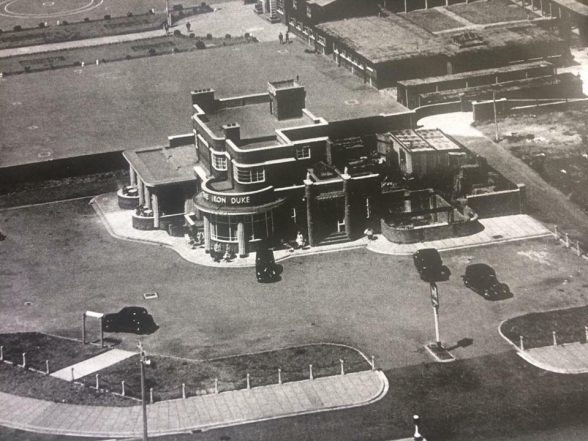
Construction work started on the Iron Duke in the 1930s, but was brought to a halt at the start of WWII. The pub still played its part in the war effort, however, as it was granted a Special Licence to serve locally stationed troops despite not being fully constructed. It officially opened its doors in 1948. It has a late Art Deco appearance with streamlined styling and boasts some beautiful moments in brick combined with intricate flint detailing – a Norfolk vernacular reflecting Ecclestone’s interest in local history, and a feature of many of the Lacons pubs. Great variety in its massing, classic flat roofs, sinuous curved brick walls, and fluted and glazed-ceramic columns complete the iconic design. While several surviving rain hoppers bear the crest of the Iron Duke ship, the brewery itself keenly declares itself in sculptural decoration. Its trademark falcon motif appears on a ceramic relief panel set into bricks laid vertically in stretcher bond, while two large falcons once flanked the pub’s entrance; sadly, these were removed by the owners, Bourne Leisure, prior to Historic England’s site inspection. Lacons’ falcons are a familiar sight in Great Yarmouth; the Magdalen Arms in Gorleston-on-Sea (1954) has rain hoppers bearing them, for example, while the Avenue Pub has them etched into its windows.
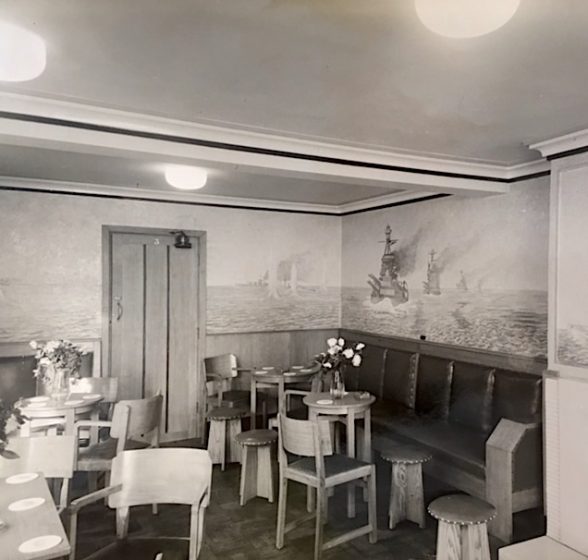
© Lacons’ Archive.
There can be few public houses so well preserved from the interwar period, which helps explain the Iron Duke’s listing. Internally, the lounge and saloon bar, entered on either side of a vestibule, still conform to their original plan. Historic internal fixtures and fittings including the bars – remarkably, said to be made from teak taken from the battleship itself – are also still intact. The pub’s interior was also decorated with beautiful hand-painted murals of the Battle of Jutland, and there is an exciting possibility that they may still be intact, obscured by boards.
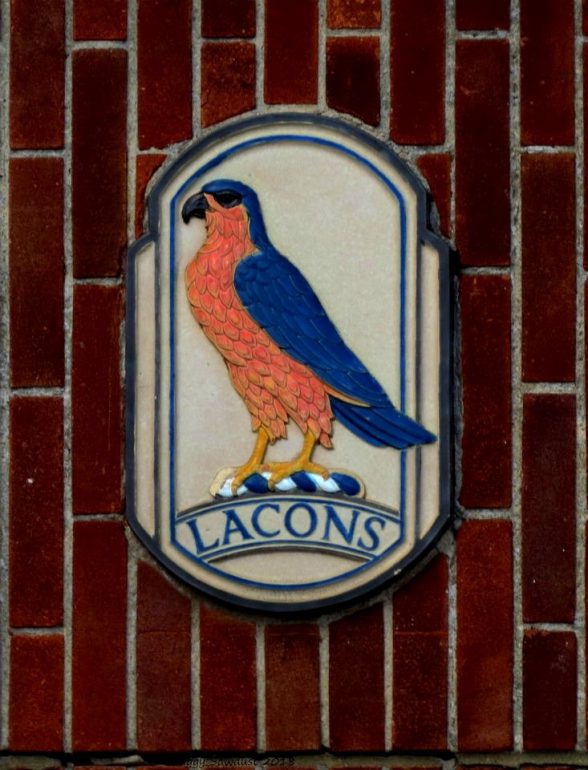
© Friends of the Iron Duke
The pub was closed and boarded up in the mid-2000s, fuelling a campaign to save it. For, despite its listing, it is under considerable threat of neglect. The Friends of the Iron Duke came together because we recognised the importance of Ecclestone’s legacy and the need to prevent further erosion of Great Yarmouth’s heritage. Like so many towns, we have witnessed the loss of many beautiful, significant buildings that could have been restored or given a new purpose. The group is made up of architects, consultants, members of the Campaign for Real Ale (CAMRA) and knowledgeable local people with a passion for the town’s history.
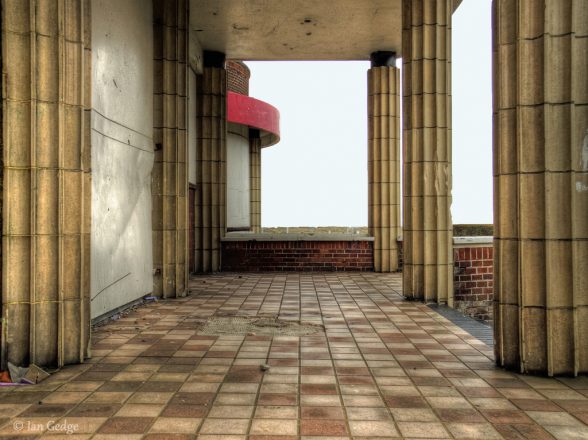
© Ian Gedge
In 2017 the Friends applied to have the pub listed, which was successfully granted on 22 November that year. Bourne Leisure appealed the listing, but this was rejected by DCMS. The campaign was given further ignition by being featured in SAVE’s Heritage at Risk catalogue, and Gavin Stamp’s ‘Nooks and Corners’ column for Private Eye. The Iron Duke, along with Ecclestone’s nearby Clipper Schooner pub (1938) also has the cachet of inclusion in the Sainsbury Centre’s current ‘Art Deco By The Sea Exhibition’, which has been extended to late September. The Norwich based architects Purcell are also producing a map, including the pub, to accompany the exhibition. The Lacons Archives, held at the Norfolk Record Office are vast, and further testament to the significance of the brewery and its architecture, locally and nationally.
We would like to see this Heritage Pub given a full and faithful restoration, open for everyone to enjoy.
By the Friends of the Iron Duke. Website | Facebook | Twitter.
The building of the month feature is edited by Dr. Joshua Mardell.
Look for past Buildings of the Month by entering the name of an individual building or architect or browsing the drop down list.

Become a C20 member today and help save our modern design heritage.